#Dayflower?
Explore tagged Tumblr posts
Text
If Gunmar had hanahaki disease what sort of blossoms do you think he’d choke on?
23 notes
·
View notes
Text




Adorable hotaru (firefly) themed ensemble, featuring a yukata patterned with fireflies among hotarugusa (dayflower, lit. "firefly grass"), and a matching obi.
#japan#fashion#kimono#obi#yukata#summer in japan#hotaru#firefly#dayflower#hotarugusa#tsuyukusa#asiatic dayflower#着物#帯#浴衣
276 notes
·
View notes
Text


outside

自由意志
72 notes
·
View notes
Text

ガラス細工のような花。
Glass-like flowers.
Nov.2023
OM SYSTEM OM-D E-M5MarkIII
M.ZUIKO DIGITAL ED 60mm F2.8 Macro
19 notes
·
View notes
Text

Buttonweed and dayflower carpeting this dry ditch
#landscape#landscape photography#nature#nature photography#naturecore#photography#flowers#wildflowers#buttonweed#virginia buttonweed#diodia#diodia virginiana#dayflower#asiatic dayflower#commelina#commelina communis#september#summer#fall#autumn#kentucky
20 notes
·
View notes
Note
hello! i’m a young queer musician from seattle. i make alternative pop music in my room under the name dayflower! i write about mental health, queer experiences, societal issues, relationships, and stories i make. i put a lot of work into it and it’s my passion! i am on youtube and most streaming services, including bandcamp :)
spotify / youtube

35 notes
·
View notes
Text


asiatic dayflower | greater celandine
#flowers#nature#wildflowers#asiatic dayflower#commelina communis#greater celandine#chelidonium majus#us invasive plants#my photos
27 notes
·
View notes
Text


I searched for her for days
#nature#mountains#hiking#landscape#new mexico#forest#los alamos#wildflowers#birdbill dayflower#Jemez#Jemez mountains#blue
12 notes
·
View notes
Text
hello hi i released a song today!!!!
it’s called better things and it’s about being a loneeeely guy and having nooooo social skills
it’s on all streaming platforms!! u should check it out!!
i have under 300 monthly listeners so you get to be the cool guy that says “oh yeah i listen to this dude he’s really underground and has under 1,000 monthly listeners yeahh”
10 notes
·
View notes
Text

Commelina communis / Asiatic Dayflower at the Sarah P. Duke Gardens at Duke University in Durham, NC
#Commelina communis#Commelina#Commelinaceae#asiatic dayflower#Dayflower#invasive plants#invasive species#Plants#Flowers#Nature photography#photography#photographers on tumblr#Sarah P. Duke Gardens#Duke Gardens#Duke University#Durham#Durham NC#North Carolina#🌺🌻
7 notes
·
View notes
Text
Today's Haiku with Picture 599

Blue flower
Like a dayflower
Ephemerally
青花の
ツユクサのごと
儚げに
Spiderwort, Oyster plant
ムラサキツユクサ
(2023.04.23)
17 notes
·
View notes
Text





Biweekly/monthly/annual/whatever post about flowers i see in my day to day life
We got a shit ton of cempasuchil for Day of the Dead, something close to 100 pots
#golden dewdrop#duranta#purple heart#cempasuchil#tagete#asiatic dayflower#commelina#bugambilia glabra#paperflower#by:md95#flower#flowers#photography#phonetography#my pics#we taking pics of flowers now i guess#day of the dead#dia de los muertos#dia de muertos
5 notes
·
View notes
Text
Succulents Part 12--Bergenia, Bromeliads, Commelina, Orchids, Pontederia, and whatever that green thing is
Succulents are a wide variety of plants, spanning multiple orders. Some have succulent leaves while others have succulent stems. Cactuses are succulents, but not all succulents are cactuses. Defining what exactly makes a succulent is a little tricky. For example, cabbage leaves are considered by some to be succulent, but tulip and onion leaves apparently aren't.
All photos mine. Unedited.




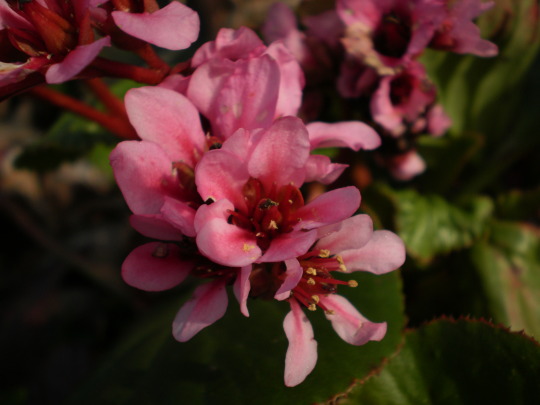
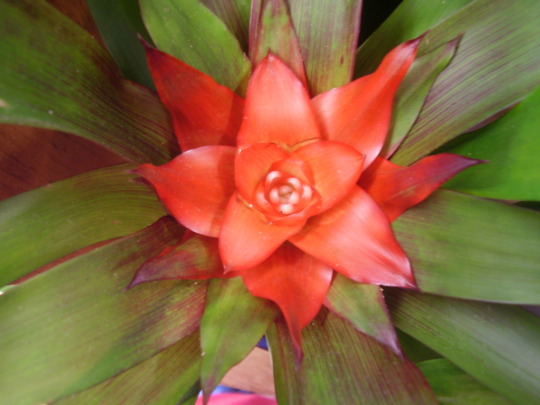
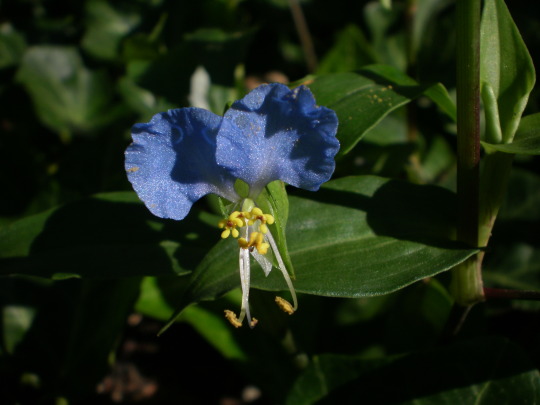
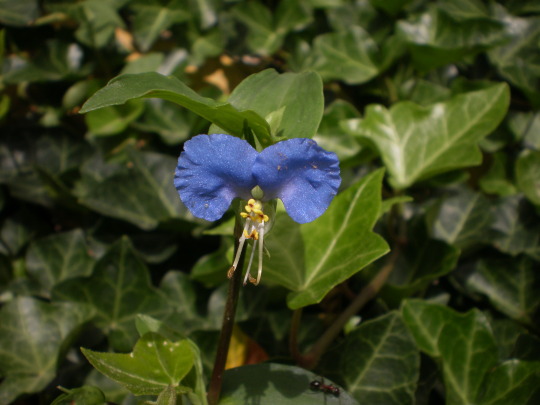


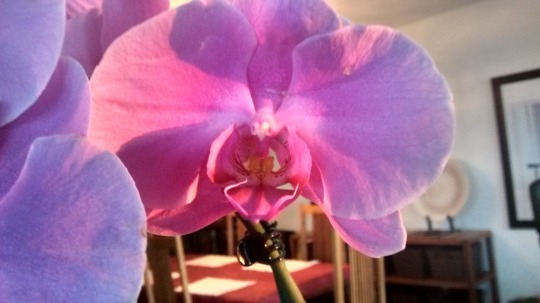





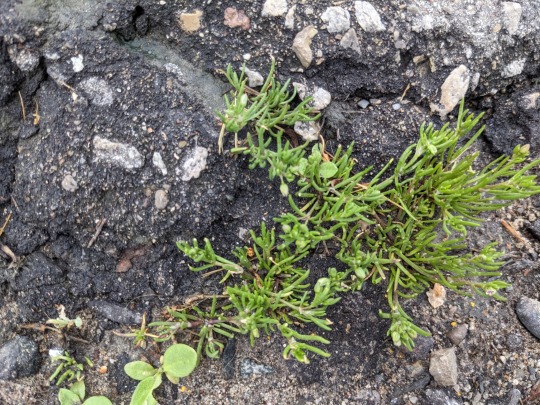
The green thing is maybe a spurrey, but I'm not sure. It's clearly a succulent, though. And that's all I got for you in the succulent department (not technically: milkweeds are succulent, but I have enough photos of them for a separate series)! Hope you've enjoyed. :)
Please don't grow water hyacinth (the light purple ones in the bottom photos), though if you're not in its native range. It's terribly invasive in the waterways. You can grow its native cousins, though! In southern Ontario, that's Pontederia cordata (pickerelweed).
Dayflower (the blue ones) on the other hand is native to the northeastern USA bordering southern Ontario and has crossed the border some time back. :)
#succulent plants#succulents#flowers#my photos#photography#blackswallowtailbutterfly#Bergenia#bromeliad#Commelina#dayflower#orchid#Pontederia#Pontederia crassipes#garden flowers#water hyacinth#invasive species#wildflowers#native North American plants#blue flowers#purple flowers#pink flowers#magenta flowers
7 notes
·
View notes
Text

Asiatic Dayflower (Commelina communis)
Family: Spiderwort Family (Commelinaceae)
IUCN Conservation Status: Unassessed
Found naturally in damp, open environments across much of eastern and southeastern Asia, the Asiatic Dayflower is named for its extremely short-lived flowers, which wither within only around 24 hours of blooming. Lacking the ability to produce nectar, the flowers of this species instead attract pollinators such as bees and hoverflies using three different floral structures; bright blue petals (which are produced in pairs, and protrude upwards,) pale yellow structures called staminodes (which resemble tiny yellow flowers but are actually underdeveloped pollen-lacking stamens that serve only to draw in pollinators) and three pale dangling true stamens, which are the only part of the flower that actually bares pollen. Asiatic Dayflower flowers are able to both produce pollen and take in the pollen of other members of their species to fertilize the ova within them, and upon being fertilized a flower will develop small, pale, oval-shaped fruits that develop separately to the plant's stamens, allowing them to continue to spread their own pollen; the entire plant dies in the autumn/fall of the year it germinated in, and as it does so it leaves its fruits behind to be carried away by animals, allowing the four small seeds within to germinate in the following summer. Within its native range (particularly the island of Honshu, Japan) the petals of this species have historically been collected and used to produce blue dye (which is achieved by wringing a "juice" from the petals containing the blue pigment Commelinin,) and today members of this species are often cultivated for this purpose. The cultivation of this species, both for ornamental purposes and to be harvested for its dye, has also allowed it to become established as an invasive species in parts of North America.
——————————————————————————
Image Source: https://www.inaturalist.org/taxa/52927-Commelina-communis
#Asiatic Dayflower#plant#plants#botany#biology#wildlife#Asian wildlife#North American wildlife#flowering plants#flowering plant#flower#flowers#dayflower#dayflowers#wildlife biology#angiosperms#angiosperm#blue dye
16 notes
·
View notes
Text


小さな花と小さなアブ
A small flower and a small flower fly.
Oct.2023
OM SYSTEM OM-D E-M5MarkIII
M.ZUIKO DIGITAL ED 12-45mm F4.0 PRO
#花#野草#野花#ツユクサ#昆虫#アブ#ヒラタアブ#マイクロフォーサーズ#flowers#wild grass#wild flowers#dayflower#insect#horse fly#flower fly#microfourthirds#photography
7 notes
·
View notes
Text


This cornflower blue flower is very tiny, and it's called "dayflower". It's just the size of a fingernail! Yet, besides it's medicinal properties, the sprouts and tender stems are edible and the juice of the flower can be used as a dye!
6 notes
·
View notes